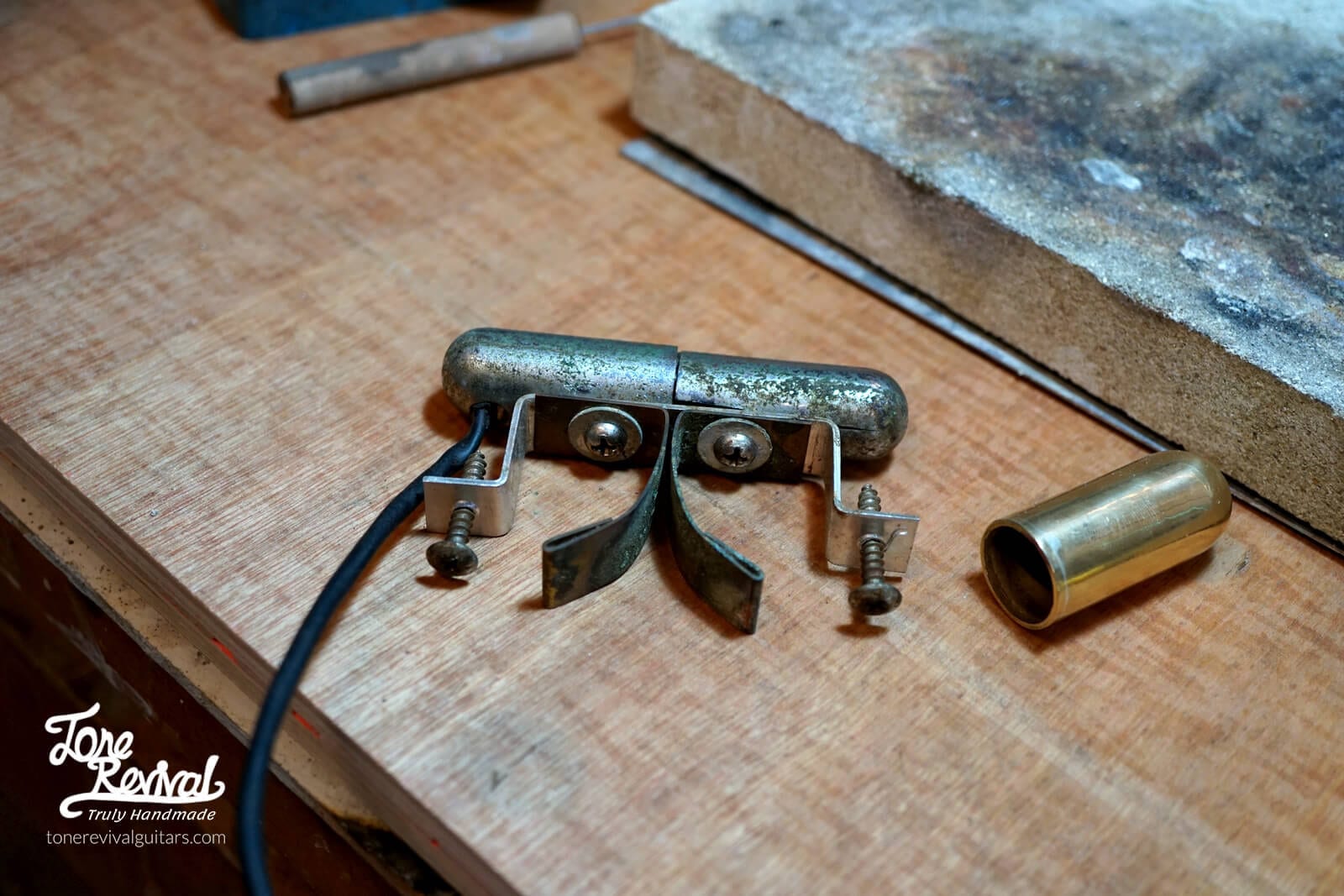
Our custom guitars are equipped with some of the best custom pickups on the market.
Our cedar guitar-the super lightweight Thunder Child is equipped with the best 50’s lipstick pickup replica available while the our pine guitar-the lightweight hollow body Spirit of the Wind is equipped with Bare Knuckle’s p-90 “Half Note”.Each pickup was chosen to fit perfectly with these tone woods and semi hollow/ hollow body style guitar.
But how does a magnetic pickup works?
Here’s a short article that explains everything you need to know:
How do magnetic Guitar pickups work?
How does a pickup “picks-up” string vibrations, and translates them into amplified sound?That is the question I’ll try to answer, in layman’s terms, in the following article.
First, let’s take a look at what makes a pickup:
When stripped down to its essence, a magnetic pickup is made from a conductive coil wrapped around a magnet. This assembly is than attached to a guitar body using some sort of mounting hardware.
While different pickup designs use different ways of putting the coil, magnet and mounting hardware together, they all basically work the same:
The coil is made of a very thin conductive metal wire, usually copper, which has an insulation coat, usually made of enamel. The insulation is there so that the wire won’t short circuit itself while both ends of the coil are ultimately connected to the guitar’s jack.
This coil can be wound either straight on the magnet, or on what is called a “bobbin”, which is generally a plastic “I” beam onto which the wire is wound. Often bobbin is then dipped in hot wax to lock the coil into place and prevent microphonic feedback (That’s when the coil generates high pitched sound artifacts by having the wire move about).
The magnet usually comes in the shape of a bar, and placed either beneath or within the coil. If the magnet is mounted beneath the coil, metal “pole pieces”, in the form of screws, cylinders, or bars are put through the bobbin and coil to function as carriers of the magnetic field. In the case of fender single coils, it is the pole pieces themselves that are the magnets.
Now, the way the magnetic pickup works is by translating the strings’ vibration into electric current, in much the same way as an electricity generating turbine, or a dynamo works: By introducing changes to the magnetic field within a conductive coil, electric current is generated. If you want to know more about how this actually works you can look into Faraday’s law of induction.
I’ll try to give a brief general description of this process:
As the string moves back and forth (or actually in a very complicated multi-directional erratic movement), an interference is created in the magnetic field, which causes electrons to be pushed back and forth within the coiled wire, effectively producing alternating current, or AC.
It so happens that a sound wave is also comprised of this back and forth movement of particles, and graphic representations of sound waves show this most clearly.
So the vibrating string, which is moving by the way of waves, causes the pickup to create a low electric current which reflects the string’s vibrations in the area above the pickup, and ends up being amplified (by the amplifier) to such a degree that enables it to drive a speaker, which then pushes air in those same frequencies (or back and forth movements) as were originally produced by the string.
It must be said that altering any part of a pickup will change the current being produced by it, and therefore change its tone. From coil gauge, length, shape and winding pattern which will determine the pickup’s resistance and capacitance, to the magnet type, size and shape which will determine the magnetic field’s shape and size.
To conclude, and just for the fun of it, I’d like to go over the chain of transformations the guitar signal goes through:
From a very physical vibrating string, the signal is converted by the pickup to electric current which, after going through an amplifier, drives a speaker that moves air, which is in turn being picked up by a microphone (that works in much the same way as a guitar pickup), being yet again converted into electric current that then goes into an analog to digital converter which transforms the electric current into data (zeros and ones), and after all the mixing and mastering this data is being converted back into electric current, amplified and drives a speaker which moves air, which is picked up by our ears and finally converted to electric pulses in order for our brain to make any sense of it.
And this made possible by a humble electromagnet called a pickup.


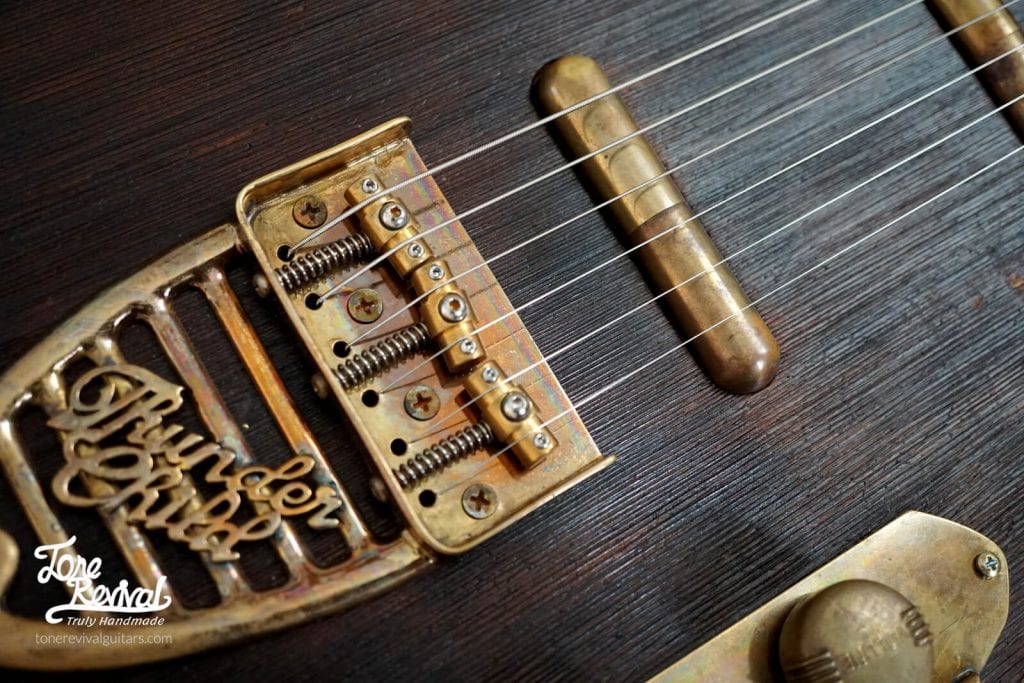
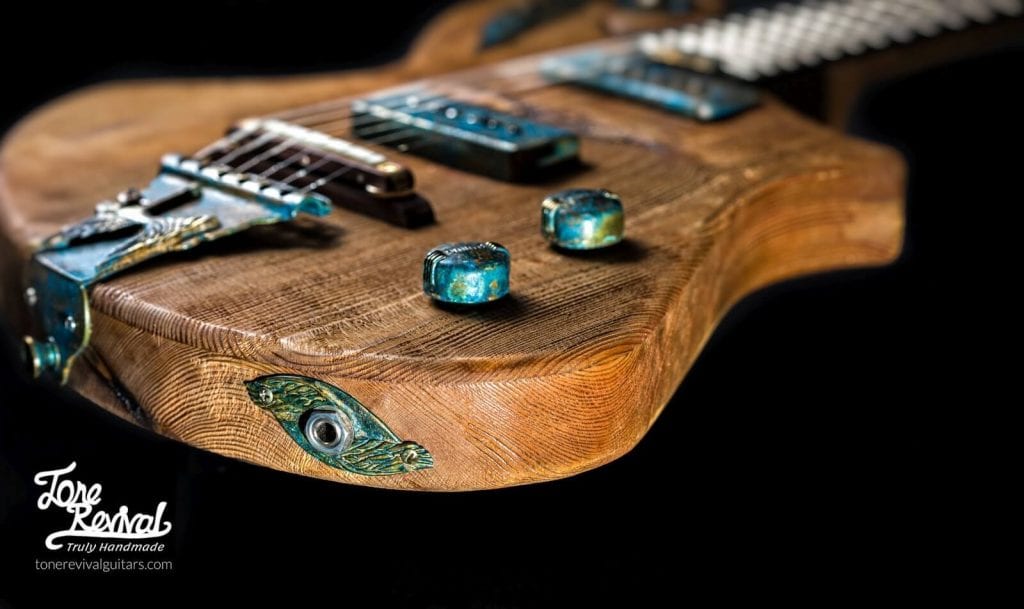
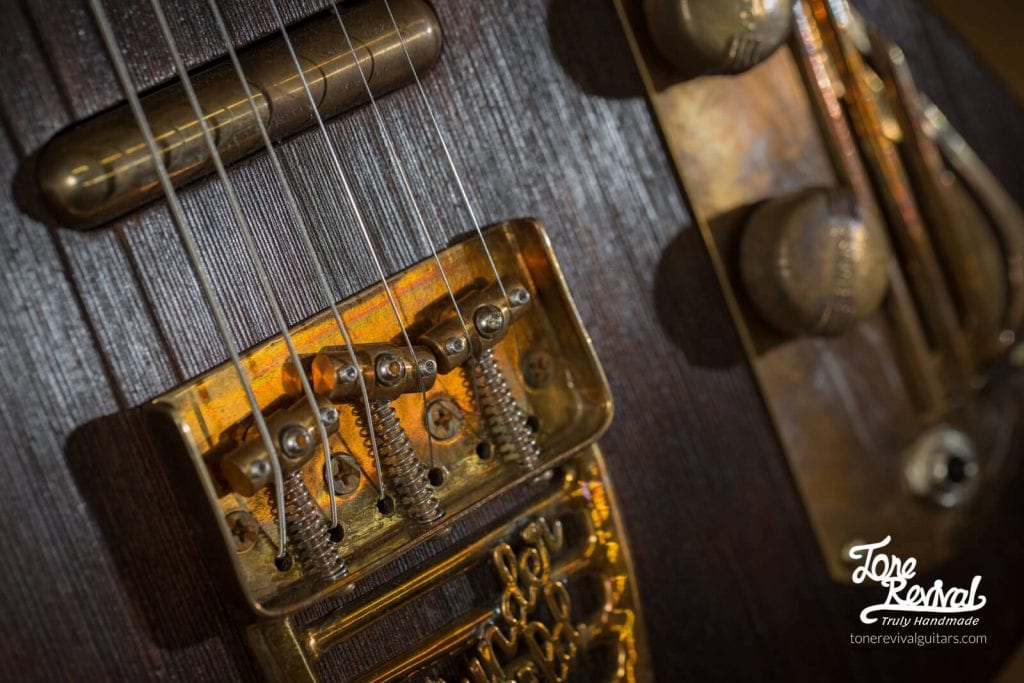
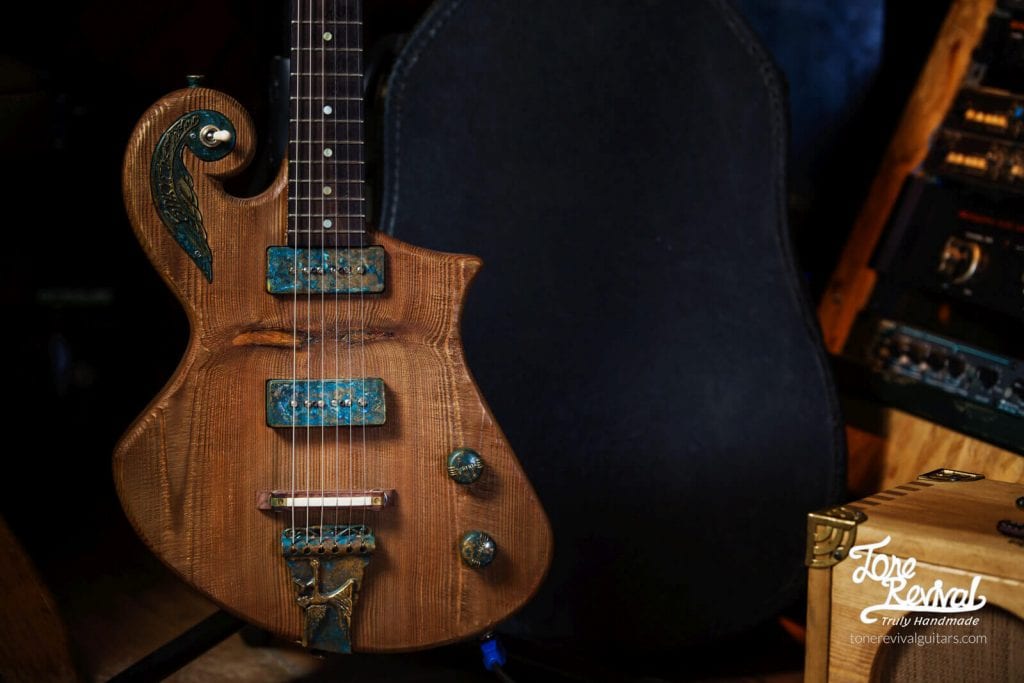

“But how does a magnetic pickup works?Here’s a short article that explains everything you need to know:”
I don’t agree that http://www.crocoorthodontics.com/blog/category/uncategorized/ Sincerely, Mikaela
96697 328402stays on topic and states valid points. Thank you. 908245